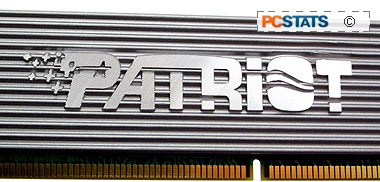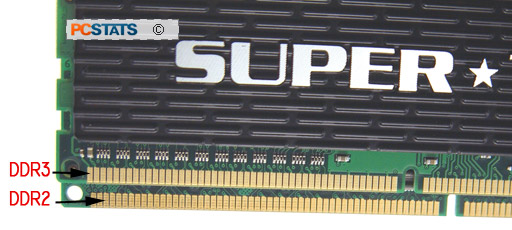 While DDR2 and DDR3 RAM
Dual Inline Memory Modules (DIMMs) are physically the same size, and contain the
same number of little gold teeth (240), each class of memory is keyed
differently and so neither is interchangeable with the other socket.
While DDR2 and DDR3 RAM
Dual Inline Memory Modules (DIMMs) are physically the same size, and contain the
same number of little gold teeth (240), each class of memory is keyed
differently and so neither is interchangeable with the other socket.
DDR3 memory modules like the Patriot PDC32G1866LLK memory will not work in a
DDR2 memory socket, even if the motherboard chipset technically supports DDR3 -
as is the case with the Intel P35 Express, and some boards based on the Intel
X38 chipset.
Conversely,
DDR3 memory is not backwards compatible with DDR2 memory slots. Not even if you
press really hard or bang it in with a hammer.
One obvious
difference between DDR3 memory and its predecessor is that DDR3 operates with
less voltage. DDR3 RAM requires 1.5V, while DDR2 demands 1.8V power. Next,
unique memory slots prevent DDR3 memory from being installed in a DDR2 memory
slot, and vice versa. The memory
standards themselves are not compatible, so neither are the
sockets.
DDR3 memory
is not really expected to take hold until mid-2008, when quad-core processors
become mainstream; right now they
are still too much on the fringe and consequently DDR3 prices are
still very high. It's hard to say where AMD will stand on all of this,
its 'K10' microprocessor architecture is not expected to adopt DDR3 RAM until
2009 according to the latest reports PCSTATS has seen.
In any case,
as with all new memory standards it's important to state the obvious to minimize
confusion from the start.
|

Note the subtle
difference where the DDR3 module is 'keyed' with respect to the DDR2
module. Both memory standards have exactly 240 gold connectors, DDR3
operates at 1.5V, DDR2 at 1.8V. Placed edge to edge, it is easy to see the
physical difference between DDR2 and DDR3 modules. Where the module is
'keyed' is what separates the modules from bing installed in the wrong
slot.
|
JEDEC standards dictate desktop DDR2
memory speeds to between 400-800 MHz, although chipset and memory manufacturers
have pushed DDR2 speeds much further. The JEDEC
standard for DDR3 memory started at 800 MHz, and runs (officially) as high as
1600 MHz. While there is a bit of overlap in terms of speeds, it's not likely to
last. At the moment most DDR3 memory is coming in two flavors, 1066 and 1333
MHz. The speed will increase as the memory standard matures. Okay, on with the
overclocking!!
